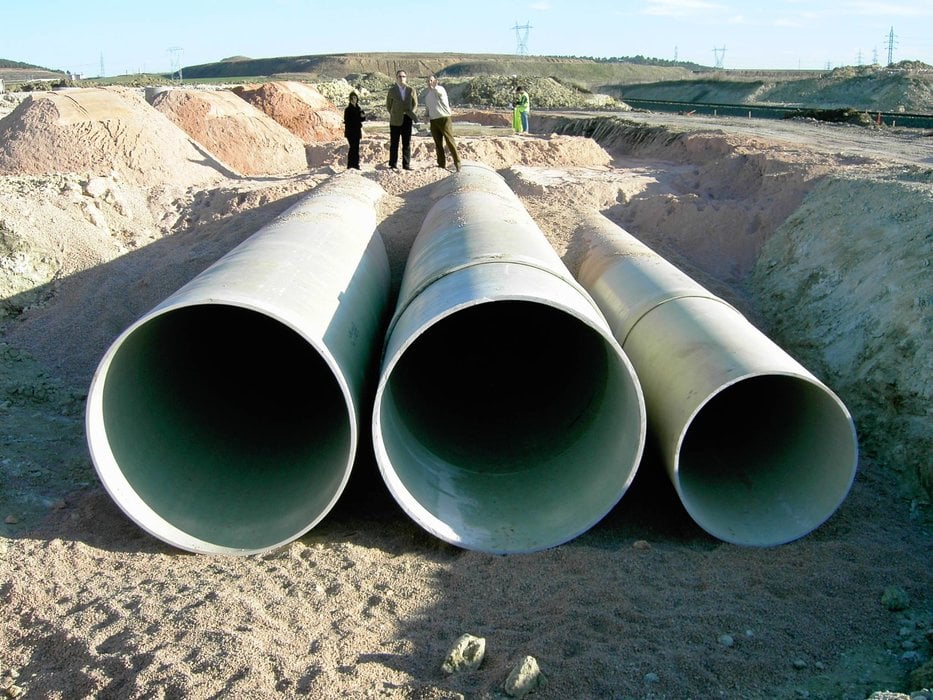www.industrymiddleeast.com
10
'09
Written on Modified on
Sector S-26 – Villalonquéjar IV Industrial Estate Development Project (Burgos)
We present the Sector S-26 – Villalonquéjar IV Industrial Estate Development Project situated in the city of Burgos, a project undertaken with Amitech Spain Flowtite GFRP pipes. The project consists in installing drains to transport rainwater by means of a gravity outlet.

The entity in charge of this project is the U.T.E. S-26 VILLALONQUEJAR, a temporary consortium made up of Dragados, Excavaciones Saiz and Raimconsa. The project developer is the Consorcio para la Gestión del Polígono Industrial Villalonquéjar IV, formed by the Ayuntamiento de Burgos and Caja de Burgos.
As we can see in the photograph, there are three rows of FLOWTITE GFRP pipes. The pipes will be buried using gravel as the surface material. The final soil cover will then be taken from the borrow area.
The FLOWTITE GFRP pipes measure 7,500 m in length, with diameters ranging from ND 800 mm to ND 2,000 mm and a stiffness ranging from NS 5,000 to NS 10,000.
One of the aspects to account for when selecting pipes for a drainage project, in this case an industrial estate housing multiple businesses, is the composition of the waste water. GFRP pipes are completely corrosion-neutral and require no type of protection, representing financial savings in terms of maintaining the installation.
At the same time, because the Manning coefficient in Flowtite GFRP pipes is very low, we are able to obtain a greater flow, based on the same diameter, compared with other types of pipes such as concrete for example.
GFRP also offers attractive versatility in the construction of manholes because we can create the manholes with the height required in each case. Much of the time a minimum height will be used so as to be able to continue then in concrete. The work to carry out is illustrated in the photograph: we create a concrete slab which will then support the precast concrete rings and flow reducing funnel.
As we can see in the photograph, there are three rows of FLOWTITE GFRP pipes. The pipes will be buried using gravel as the surface material. The final soil cover will then be taken from the borrow area.
The FLOWTITE GFRP pipes measure 7,500 m in length, with diameters ranging from ND 800 mm to ND 2,000 mm and a stiffness ranging from NS 5,000 to NS 10,000.
One of the aspects to account for when selecting pipes for a drainage project, in this case an industrial estate housing multiple businesses, is the composition of the waste water. GFRP pipes are completely corrosion-neutral and require no type of protection, representing financial savings in terms of maintaining the installation.
At the same time, because the Manning coefficient in Flowtite GFRP pipes is very low, we are able to obtain a greater flow, based on the same diameter, compared with other types of pipes such as concrete for example.
GFRP also offers attractive versatility in the construction of manholes because we can create the manholes with the height required in each case. Much of the time a minimum height will be used so as to be able to continue then in concrete. The work to carry out is illustrated in the photograph: we create a concrete slab which will then support the precast concrete rings and flow reducing funnel.

